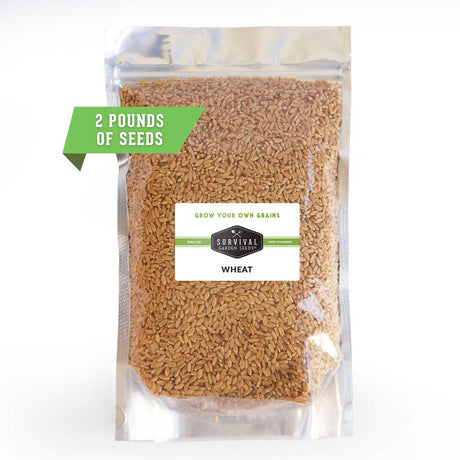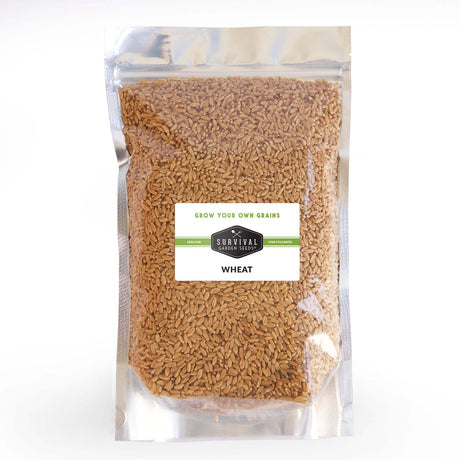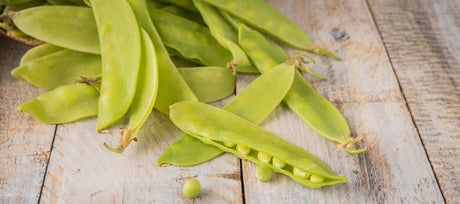
Growing Sweet Success: Your Guide to Oregon Sugar Pod II Peas for Spring & Fall
Discover how to grow sweet, crisp Oregon Sugar Pod II peas! This guide covers planting, care, harvesting, and tips for a bountiful crop of these delicious snow peas.
Free Shipping on US Seed Orders of $20+ SHOP NOW
Wheat seeds are the foundation of agriculture. Its slender stalks are a testament to humanity's enduring connection to the earth. Planting wheat seeds allows gardeners to partake in the ancient tradition of growing this essential grain, used for bread, pasta, and many other foods. Wheat is usually cultivated as an annual plant. For the best yields, grow this staple crop in full sunlight and a base of fertile, well-drained soil.
Learn more about growing wheat seeds in our Survival Garden Training Blog
Survival Garden Seeds offers wheat seeds for sale in bulk, allowing you to grow a large crop for bread, cultivating microgreens, and even for use as cat grass. Our heirloom wheat seeds are selected for their high germination rates.
Wheat has its origins in the Fertile Crescent, over 10,000 years ago. It has been a fundamental food source for many different civilizations in the past. Today, it is one of the most cultivated crops in the world, adapted to most climates and can be grown easily in USDA hardiness zones 3 to 9. Wheat's versatility and nutritional value make it an indispensable part of the global food supply.
For winter wheat, sow seeds in the fall. Alternatively, you can sow them in early spring for a warmer harvest. For a full cycle harvest, it will take four months for the wheat to finish ripening. Remember, planting times can vary depending on your location. Sow the seeds about an inch deep. Provide enough space to allow the plants to develop strong roots. Wheat prefers spacing of about 6 to 8 inches between plants for ample growth and good air circulation.
Wheat is a plant that requires very little maintenance. Regular watering, particularly during dry periods is beneficial. Water is crucial during grain development. Use a balanced fertilizer at planting to enhance soil fertility. Although rarely, pests and diseases can infest, so monitor your crops. Harvesting time can start when the stalks turn golden and the heads droop.
Get your wheat seeds for planting on time, and enjoy their many uses. Whether for microgreens to get a daily dose of vitamins, for your feline friend, or for their nutritious wheat berries and grains, wheat connects you to a rich history of agriculture, from times past and the future to come.

Discover how to grow sweet, crisp Oregon Sugar Pod II peas! This guide covers planting, care, harvesting, and tips for a bountiful crop of these delicious snow peas.
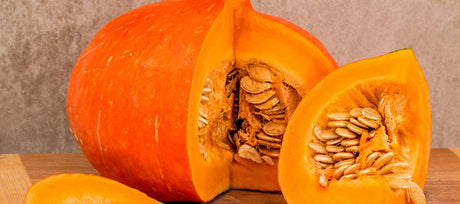
Seed saving helps you to preserve heirloom varieties and carry forward the varieties and flavors that you loved. Learn some tips on how to save and store seeds.

Spinach is a satisfying leafy greens to grow: quick to sprout, packed with nutrients, and endlessly versatile. Learn more about this heirloom vegetable.
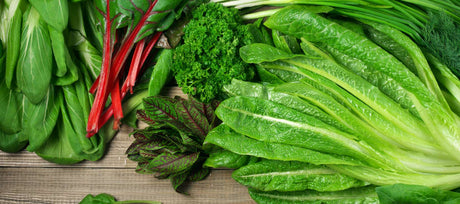
Discover the best fall greens to plant! From mild cabbage to spicy arugula - complete growing tips, harvest times, and flavor profiles for success.
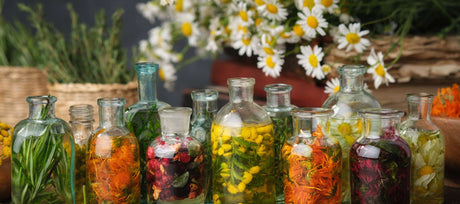
Growing your own healing flowers is a great way to take control of your health. Your garden turns into a natural pharmacy, and every flower is brings beauty to the...
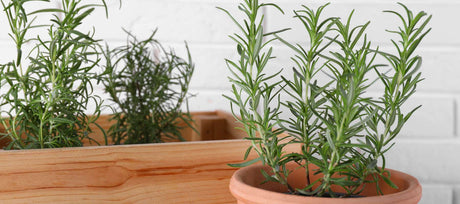
Growing rosemary indoors provides year–round access to fresh sprigs. With the right strategy you can enjoy aromatic rosemary that stays healthy for many years.
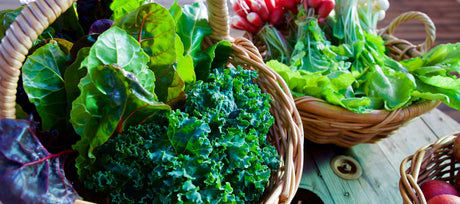
Quick-growing leafy greens let home gardeners enjoy fast harvests, plenty of vitamins, and a way to keep their gardens producing all year. You can grow the right types from seed...
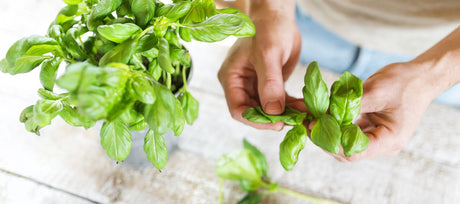
Most kitchens, whether in a busy restaurant or a home, will have fresh basil. Basil is popular everywhere. It's more than just a decoration; it adds flavor, is healthy, and...
